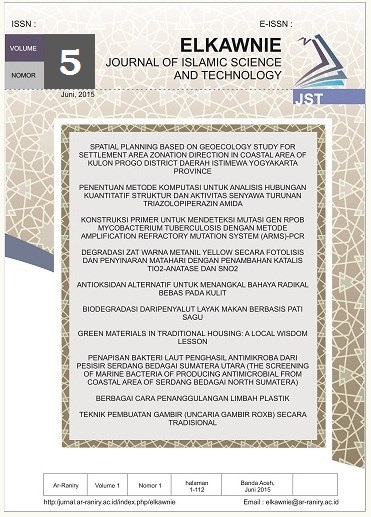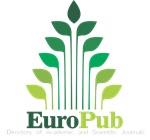Survey, Analysis and Issues of Islamic Android Apps
DOI:
https://doi.org/10.22373/ekw.v5i1.4541Keywords:
Mobile app, Islamic app, Religion, Quran, Muslim, App Developer, Smart PhoneAbstract
Mobile devices like Smartphones, tablets and PDAs have become an indispensable part of every person’s day to day activities. The growth and propagation of the smartphones has created new opportunities for religious app developers to develop apps that will provide utilities and an easy accessibility to religious information. The purpose of this research is to conduct a survey and to classify Islamic apps that are available on Google Play Store. The user surveys were conducted to evaluate and investigate the usage pattern of the Islamic apps in everyday life of the Muslims. The results identify the need of authentication of the app content that gives rise to many critical issues and myths. Also, it stresses the need for a “Religion” category in Google Play Store. The benefit of this research is twofold, as it focuses on identifying which app features Muslim users are more interested in using and secondly, the Islamic apps/features that need to be developed.References
Abdelaziz, M., Abdelaziz, M., & Zayed, A. H. (2016). ZCMGenerator: Framework for Generating Zakat Calculation Models based on the MDA Approach. International Journal of Scientific & Engineering Research, 7(9), 291–300.
Asadullah, A., Yerima, B., & Yusuf, A. O. (2014). The Ethics of Information and Communication Technology : An Islamic Overview. International Journal of Information and Communication Technology Research, 4(2), 45–49.
Bawany, N. Z., & Shaikh, Z. A. (2016). Document Authentication Framework. FAST-NU Research Journal, 2(1).
Campbell, H. (2010). When Religion Meets New Media (1st ed.).
Campbell, H. A., Altenhofen, B., Bellar, W., James Cho, K., & Professor, A. (2014). There’s a religious app for that! A framework for studying religious mobile applications. Mobile Media & Communication, 2(2), 154–172. https://doi.org/10.1177/2050157914520846
Frey, R. M., Xu, R., Ammendola, C., Moling, O., Giglio, G., & Ilic, A. (2017). Mobile recommendations based on interest prediction from consumer’s installed apps–insights from a large-scale field study. Information Systems, 71, 152–163. https://doi.org/10.1016/j.is.2017.08.006
Gunawan, T., Kartiwi, M., & Omar, A. (2012). Development of Web Application for Muslim Traveller with Emphasis on Social Networking. ICCIT Conference, 381–386.
Ishak, M. S., Siti Zobidah, O., Bolong, J., Abu Hassan, M., & Abd. Ghani, Z. (2011). Internet’s Islamic Information Credibility Scale (IIICS). Ullum Islamyyah, 6.
Ismail M.A. (2015). Fabricated information on social media: A Case Study of Twitter. Conference: 4th International Conference on Computer Science & Computational Mathematics (ICCSCM 2015), 1–5. Langkawi, Malaysia.
Kamsin, A., Gani, A., Suliaman, I., Jaafar, S., Sabri, A. Q. M., Idris, M. Y. I., & Razak, Z. (2015). Program for Developing the Novel Quran and Hadith Authentication System. International Journal on Islamic Applications in Computer Science and Technology, 3(1), 8–17. https://doi=10.1.1.725.9707
Khan, E. A., & Shambour, M. K. Y. (2017). An analytical study of mobile applications for Hajj and Umrah services. Applied Computing and Informatics, 14(1), 37–47. https://doi.org/10.1016/j.aci.2017.05.004
Khan, I. A. (2010). Authentication of Hadith: Redefining the Criteria (1st ed.; Dr. Anas S. al-Shaikh-Al & Shiraz Khan, eds.). International Institute of Islamic Thought.
Kittler, J., & Mitchell, J. C. (2015). Cross-Cultural Design Applications in Mobile Interaction, Education, Health, Transport and Cultural Heritage. In P. L. P. Rau (Ed.), 7th International Conference, CCD 2 (1st ed., p. 419). https://doi.org/10.1007/978-3-319-20934-0
Mahmud, M., Tap, A. O. M., Hussein, I., & Aliyu, M. (2012). Content Evaluation Of Islamic Websites. 2012 Southeast Asian Network Of Ergonomics Societies Conference (Seanes), (June 2014), 21–30.
Mazumder, T. A., Student, M. S., Light, F., Networking, S., & Players, V. (2010). Mobile Application and Its Global Impact 1. International Journal of Engineering & Technology, 10(06), 72–78.
Mohamed, N., Mantoro, T., Media, A., & Mahmud, M. (2016). Critical Socio-Technical Issues Surrounding Mobile Computing. In M. M. Teddy Mantoro, Media Ayu (Ed.), IGI Global. https://doi.org/10.4018/978-1-4666-9438-5
Olmstead, K., Rainie, L., Page, D., & Manager, S. C. (2015). Apps Permission in the Google Play Store.
Siddiqui, A. A., & Shaikh, Z. A. (2016). A Survey of Semantic Computing: General and Islamic Domain Applications. Mehran University Research Journal of Engineering & Technology, 35(2), 253–264.
Syadiah, N. W. S., Nurul, F. A. B., Mokhairi, M., Wan, M. W. I., Azilawati, R., & Norhafizi, Y. (2016). a Framework for Designing Mobile Quranic Memorization Tool Using Multimedia. Journal of Theoretical and Applied Information Technology, 92(1), 20–17.
Talib, S., Mahmud, M., Abd Rahman, E. S., Suraya, A., & Abubakar, A. (2015). Mobile Quran App Security Vulnerabilities. Proceedings of the 5th International Conference on Computing and Informatics, ICOCI 2015, (198), 447–455.
Tayan, O., Ibrahim, M., & Al-Oufi, K. (2017). Design and Architecture of a Location and Time-based Mobile-Learning System: A Case-Study for Interactive Islamic Content. International Journal of Advanced Computer Science and Applications, 8(3), 302–308. https://doi.org/10.14569/IJACSA.2017.080342
Downloads
Additional Files
Published
Issue
Section
License
Proposed Policy for Journals That Offer Open Access Authors who publish with the Elkawnie journal agree to the following terms:
a. Authors retain copyright and grant the journal right of first publication with the work simultaneously licensed under a Creative Commons Attribution License that allows others to share the work with an acknowledgement of the work's authorship and initial publication in this journal.
b. Authors are able to enter into separate, additional contractual arrangements for the non-exclusive distribution of the journal's published version of the work (e.g., post it to an institutional repository or publish it in a book), with an acknowledgement of its initial publication in this journal.
c. Authors are permitted and encouraged to post their work online (e.g., in institutional repositories or on their website) prior to and during the submission process, as it can lead to productive exchanges, as well as earlier and greater citation of published work (see The Effect of Open Access).

























